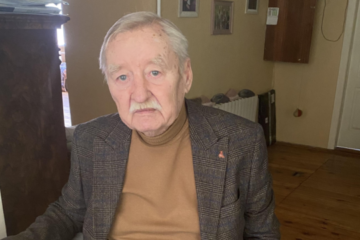

The Center for Strategic Communication and Information Security collected the main observations and conclusions of its own research and analysis of the information field a year into Russia’s full-scale invasion of Ukraine. In particular, we will discuss how Russian propaganda blackmailed European countries, what messages it circulated, what were their target audiences, and what was the world’s response to Russia’s “information crimes.”
Geography of Russian propaganda
Throughout the year, Russian propaganda searched for its audience not only in the Russian or Ukrainian information space, but also far beyond its borders.
For example, in the online media of African countries, Russian narratives were deliberately shifting responsibility for “all troubles” to Ukraine — food crisis, Russia’s war against Ukraine, shelling of the civilian population in Ukraine, etc.
In the countries of North America, particularly in the United States and Canada, toxic narratives included an emphasis on the negative effects of sanctions on Europe and the United States and on the need for “peace talks.”
And among the popular topics of Russian propaganda in the online media of Latin American countries, in particular, in Brazil, Mexico, and Argentina, were narratives about the nuclear threat, Russophobia, calls for peace negotiations and support for China in Russia’s war against Ukraine.
Read about the methods used by Russian propaganda and the messages spread in the countries of Central and Eastern Europe in a detailed study of the Center for Strategic Communication and Information Security based on the monitoring results of Ukraine War Disinfo Working Group.
How Russian propaganda intimidated and blackmailed the West?
A study by the Center for Strategic Communication and Information Security of Kremlin narratives on blackmail and threats to Europe shows how Russia intimidated European countries with nuclear weapons, including Sarmat launchers, and the “inevitability of World War III.”
Reports of the use of nuclear weapons, for example, were used in the context of the condition “if Russia loses, it will use nuclear weapons.”
At the same time, for the “full picture,” the Kremlin propaganda itself invented threats and blackmail on the part of Western countries. For example, “the West will use nuclear weapons against Russia,” “Georgia will have a second front against Russia,” and “the West wants Ukraine to occupy Russia.”
Among the European countries, the narratives, which directly called the “next target” of Russia’s attack, included Poland and Lithuania. It is them, according to propaganda reports in Europe, that Russia is supposedly “going to attack next.” Russia also sometimes threatened to “attack” NATO countries in general.
In addition, the Kremlin propaganda tried to drive a wedge between European countries. For example, according to Russian propagandists and their reports in the local channels of European countries, Lithuania, Poland, the EU, the United States, and Ukraine “prolong the war and lead to its escalation.”
What did Russian propaganda tell the world?
Russian propaganda targeted foreign audiences with disinformation narratives related to sanctions, military assistance, Ukrainian refugees, front lines, etc. The main task of Russia in the world information field was to discredit Ukraine and “justify” the war against Ukraine.
For example, after the introduction of EU sanctions against Russia, in response to Russia’s full-scale invasion of Ukraine, Russian propaganda intensified in discrediting such actions of Europe. Among the narratives related to sanctions, the Kremlin channels in Europe disseminated information that “the future of the EU will be cold and hungry.” “The EU shot itself in the foot,” “the US economy is also suffering, which is why it is looking for ways to restore business with Russia,” and “sanctions do not harm Russia, but even make it stronger.”
In addition to these narratives, global narratives were also transformed — from the statement that “the West provoked Russia to attack Ukraine” to “sanctions provoke the conflict.” “The US is waging war against Russia” — “sanctions are part of the US war against Russia.”
Read more in the study of the Centre for Strategic Communication and Information Security “Anti-Sanctions Narratives of the Kremlin: What Russian Propaganda Says in Europe.”
Moreover, in the course of the year after the full-scale invasion of Russia in Ukraine, Russian propaganda intensified all its efforts to spread doubts about the need and expediency of providing military assistance to Ukraine.
In particular, one of the main narratives was: “military assistance from the West is misused or stolen.” Another narrative was spread: “military assistance to Ukraine prolongs the war.”
The following narratives also remained relevant: “countries that provide military assistance to Ukraine are becoming weaker,” “military assistance from the West does not make sense,” “Russia destroys the military assistance provided to Ukraine,” “military assistance forces Russia to expand military operations outside Donbas,” “the West will no longer provide military assistance to Ukraine,” and “Ukraine will use Western weapons to kill Russians or attack the territory of Russia.”
Read more in the study of the Center for Strategic Communication and Information Security “How Russian Propaganda Tries to ‘Persuade’ the West to Stop Supplying Military Aid to Ukraine”
How does the world counter Russian propaganda?
With the beginning of Russia’s full-scale invasion of Ukraine, the world began to realize the pernicious and dangerous power of Russian propaganda and the criminal intentions of those who broadcast it. Thus, the countries of the world one by one stopped broadcasting TV channels of propaganda media, and the Russian propagandists themselves were on the sanctions lists.
In March 2022, the EU imposed sanctions on Sputnik and RT/Russia Today (RT English, RT UK, RT Germany, RT France, RT Spanish) and stopped their broadcasting in EU countries.
Read more about how the world is fighting the Kremlin media, while propagandists are looking for new ways to influence foreign audiences, in the publication by the Center for Strategic Communication and Information Security “How the World is Fighting the Kremlin Media RT and Its Propaganda.”
And in December, the ninth package of sanctions from the European Union banned broadcasting of four more Russian media on the territory of the EU — NTV/NTV Mir, Russia 1, REN TV, and Channel One.
In December, Moldova also suspended the license of six TV channels that disseminated disinformation about Russia’s war against Ukraine — the Moldovan TV channels TV6, Orhei TV. Primul în Moldova, Accent TV, as well as the Moldovan versions of the Russian broadcasters RTR Moldova and NTV Moldova.
In addition, the restrictions on the broadcasting of Russian state media due to Russia’s full-scale invasion of Ukraine were also reported by telecommunications providers in Australia, Canada, and the United States.
Since the full-scale invasion of Russia in Ukraine, Russian propagandists also began to be sanctioned.
Thus, back in February, Russian propagandists Margarita Simonyan, head of the main Kremlin propaganda channel RT, and TV presenter Vladimir Solovyov, were sanctioned by the European Union. The sanctions include the freezing of assets on the territory of the EU and ban on entry into the EU countries and transit through them.
For the spread of disinformation, TV presenter Olga Skabeeva, director of the Russian-language RT service Anton Krasovsky, propagandist and filmmaker Tigran Keosayan were also sanctioned.
How do tech companies limit the spread of Russian propaganda on social media?
After Russia’s full-scale invasion of Ukraine, Meta began to reduce the priority of showing pages and posts of Russian propaganda resources and complicate the search for these resources on Facebook and Instagram around the world.
In addition, Russian state media were banned from advertising or monetizing their posts on the company’s platforms.
Moreover, at the request of the government of Ukraine, access to the pages of Margarita Simonyan and Anton Krasovsky, Russian propagandists and TV presenters Tina Kandelaki, Vladimir Solovyov, and others, was restricted for Ukrainian users. These people support Vladimir Putin and the war against Ukraine, so, most of them were sanctioned. At the same time, the EU and the UK, according to government requests and in accordance with the implemented sanctions, restricted access to Russia Today and Sputnik.
YouTube also blocked Russian propaganda channels RT and Sputnik across Europe; in Ukraine, Channel One, Russia 24, Russia 1, TASS, Ria Novosti, RBC, and Zvezda TV were also blocked. In addition to the YouTube channels of Russian media, video hosting blocks the accounts of individual pro-Kremlin propagandists, such as Russian presenter Vladimir Solovyov “Solovyov LIVE” and his program “Evening with Vladimir Solovyov,” propagandist Anatoly Shariy, his wife Olga Shariy and their channel “Double.”
Read more about how the world turns off Russian propaganda in a study by the Center for Strategic Communication and Information Security.
However, even after a series of blocking efforts and sanctions, Russian propagandists continue to bypass them and create new channels of communication. So the world must continue to counter the Kremlin’s propaganda system. Effective counteraction requires coordinated efforts and a complete ban of all possible channels used by the “Kremlin mouthpieces” because Russian propaganda and its pundits are fully responsible for weaponizing information against Ukraine and the whole world.
Center for Strategic Communication and Information Security
Source: Russia’s disinformation efforts since full-scale invasion of Ukraine




